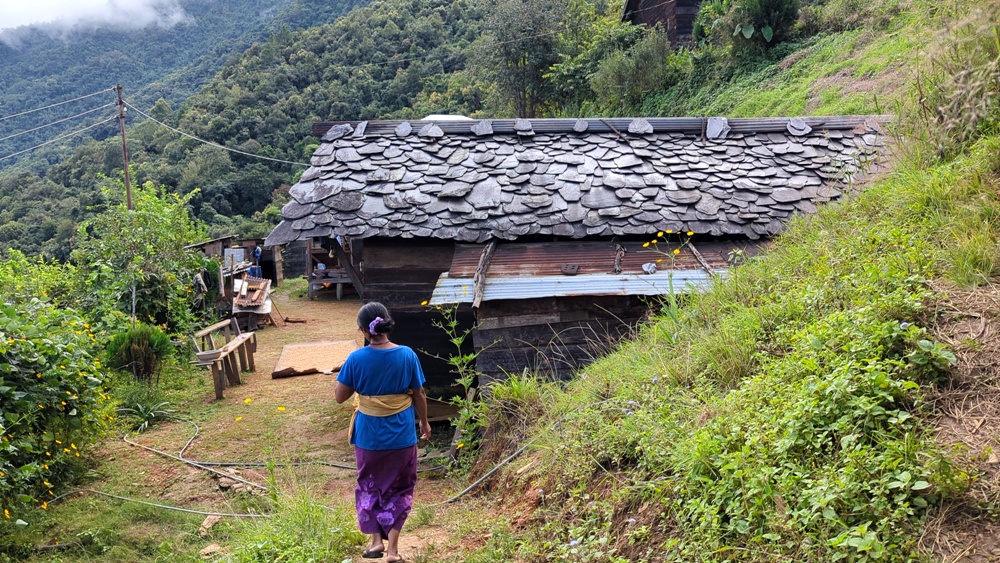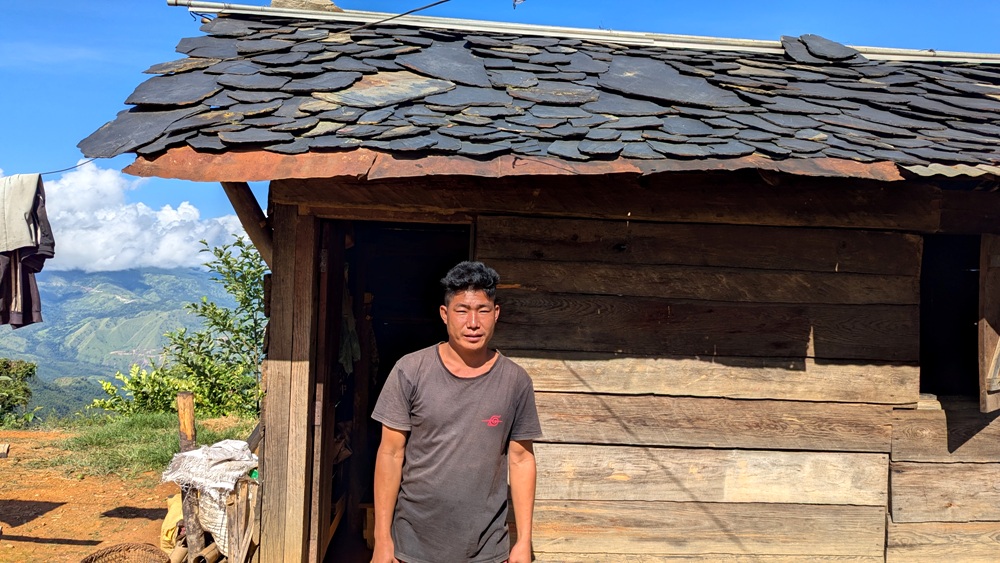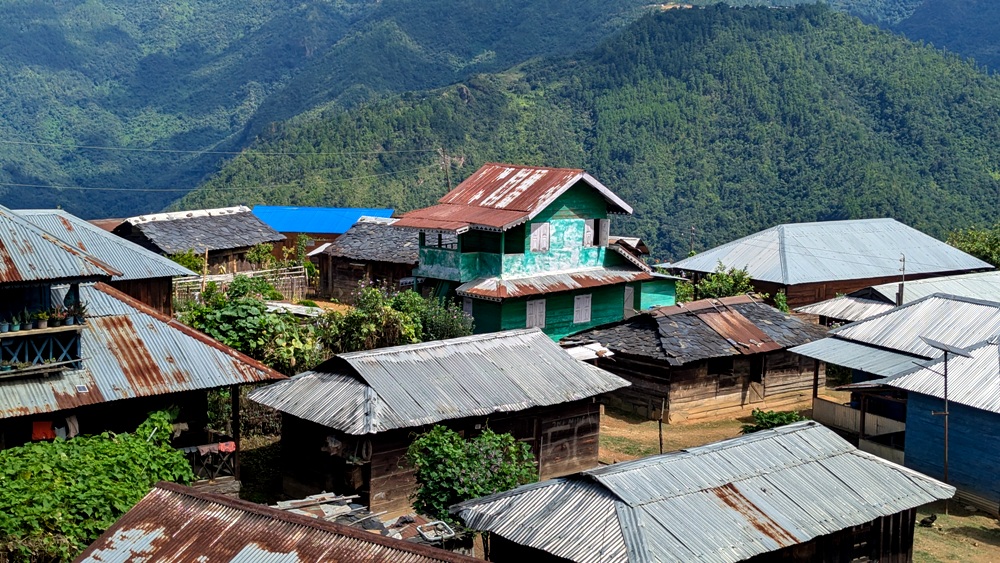THURSDAY, OCTOBER 30, 2025
- Home
- Building on the Past: Mimi village sustains its stone slate roofing heritage
Building on the Past: Mimi village sustains its stone slate roofing heritage
Mimi village in Kiphire district continues to preserve its traditional stone slate roofing, showcasing indigenous craftsmanship and sustainable building practices.
Share

KOHIMA — Walking past the steps of Mimi village— about three hours’ bumpy ride from Pungro town — one can spot a number of stone slate roofs standing among other houses, a sign that the community continues to preserve its age-old building tradition.
For the people of Mimi, the stone slate roof is more than just a structure above their heads. It represents craftsmanship, resilience, and sustaining of indigenous knowledge from one generation to another.
Lakhum, a 31-year-old builder from the village, learnt the art of making stone slate roofs by observing his parents and grandparents. He began building his first stone-roofed house at the age of 22, a year after getting married. Now a father of six, he continues to build and maintain such roofs, hoping to pass down the skills to his children and the younger generation.

“This type of roof has been in practice since our forefathers’ time,” he said.
The stones currently used for roofing were mostly collected by their parents and grandparents. Although villagers no longer quarry new stones — the source being about a kilometre away from the village — they continue to preserve the decades-old slates handed down through generations.
“In every household, people have their own share of stone slates to build their house. They have preserved it. We don’t know how to dig them out anymore, so we are preserving whatever is left by our forefathers,” said Lakhum.
Also read EM exclusive: Nagaland's 1098 Child Helpline: Protecting children, one call at a time
Even those who have replaced their traditional stone roofs with steel or CGI sheets have kept the old slates carefully stored for future use. Properly preserved, the stones can last for decades, he added.
Currently, around 40 to 50 houses in the village still retain their stone roofs. Mimi is one of eight villages under Mimi circle — along with Khongjiri, Mutingkhong, Lopfukhong, Betang, Khaha, Khongka, and Hakkomute — but, according to villagers, the stone roofing tradition is now found only in Mimi.

The stones, typically found beneath the soil, are thin and fragile, requiring careful handling. While the stones form the main structure of the roof, sourcing supplementary materials such as bamboo, cane, and ropes from the forest is often more challenging.
“To build a stone roof, we have to start collecting cane and bamboo months ahead. By peak winter, we cut them down to prevent worm infestation and later damage,” explained Lakhum.
The villagers traditionally used a specific type of forest vine to bind the stones, which is boiled in water to improve its flexibility and strength. Bamboo is used to support the slate structure, and the top portion of the roof is covered with steel sheets for protection. Today, many builders use binding wires instead of natural ropes and canes.
Read more: 5 Guinness World Records That Put Nagaland on the Map
If all materials are ready, constructing a stone roof takes two to three days. However, starting from scratch — from digging stones to completing the roof — can take several months.
Beyond cultural preservation, the stone roofs also serve practical and environmental purposes. They act as a natural barrier against heat, keeping houses cool, and offer a degree of soundproofing during heavy rain.
“If the stone slates are not adjusted properly, rainwater can seep in. But we can resize and adjust the stones to fix leakage points,” said Lakhum.
As one walks through the village, some stone-roofed houses are still used as kitchens, while others stand uninhabited. The villagers note that the roofs remain intact as long as the homes are lived in and smoke rises from within, but deteriorate over time when abandoned.
On this week's Education series: Keneilelie Sorü on Turning Fitness Dreams into Sustainable Careers
On average, a stone roof lasts around 10 to 15 years.
As one roam about the village, some stone roof houses are still used mainly as kitchens and some already build are not inhabited. One can also be found stone roofing house monoliths in the village.
The size of the house depends on the stones available, with the largest typically measuring about 15 feet in length and 12 feet in breadth.
Having learnt from his elders, Lakhum is determined to pass on the knowledge to his children and others in the community so that the tradition continues to live on.

